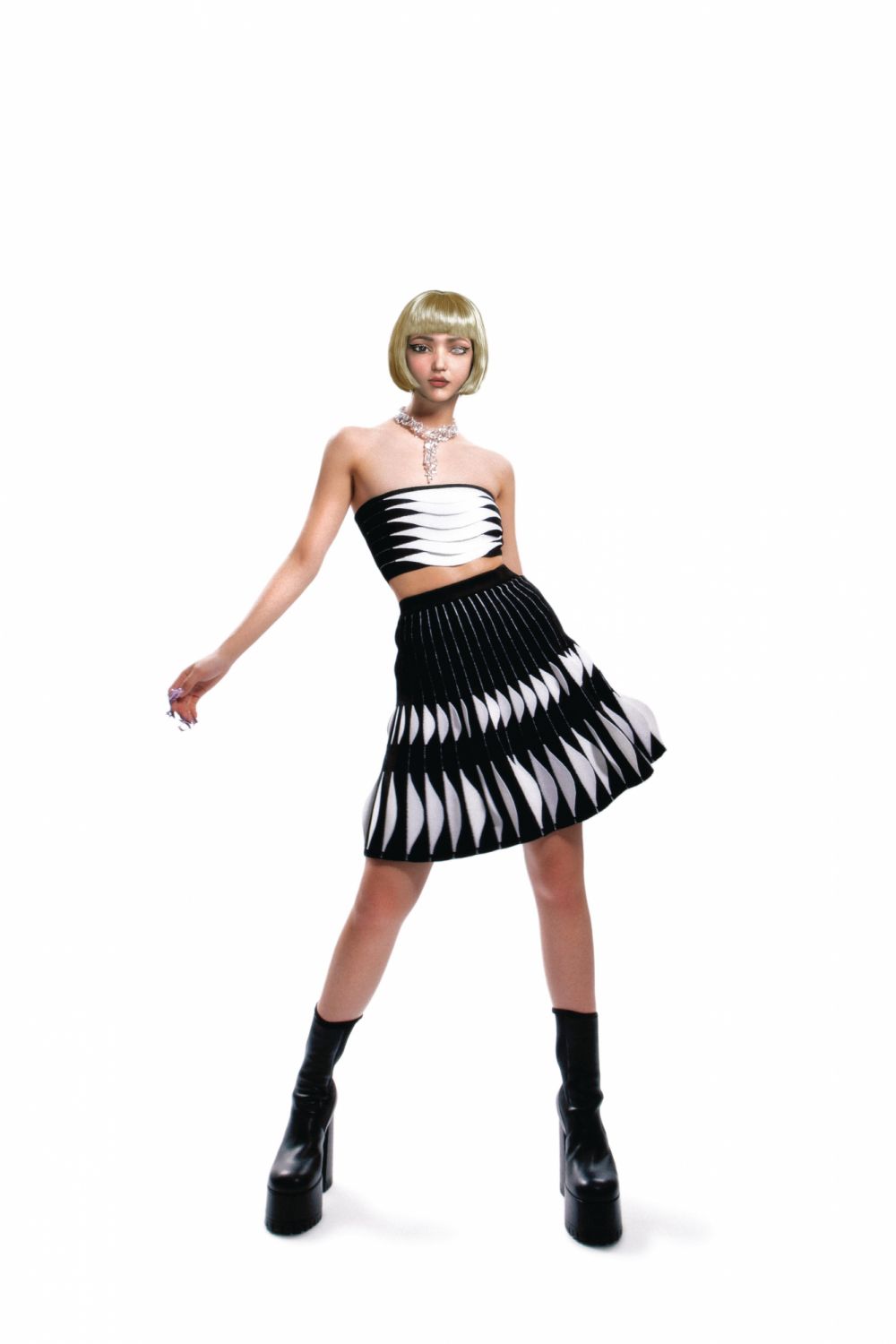What is virtual fashion, and how might its development impact everyday life? With a collaborative fashion shoot featuring Hong Kong-born virtual influencer Ruby 9100M, aka Ruby Gloom, Tatler investigates
Things we don’t have now but are likely to have very soon: genuinely wearable digital clothes; lots of people using metaverses; the ability to move seamlessly between them. Things we definitely do have right now: numerous big fashion brands experimenting with purely electronic outfits; a rapidly growing collection of digital-only fashion brands; the relentless rise of NFTs. Add all those things together, and what it suggests is this: the business of digital fashion is about to explode.
Digital fashion can mean a number of things. It can mean digital versions or extensions of physical clothes; digital clothes rendered onto the bodies of real people; or clothes that are entirely digital, with no physical equivalent, which can be worn by digital characters or avatars on social media, in games and in metaverses.
Read more: Meet LVMH’s First Metaverse Ambassador

The world’s first purely digital clothing collection was only launched in 2018, by Scandinavian retailer Carlings. Something similar has already existed for a long time in the gaming world, though, where players have long happily paid real-world money for digital skins; market research company Juniper Research predicts that the market for in-game purchases will be worth US$50 billion in 2022. But the ascent to widespread cultural consciousness of NFTs, the blockchain-based tokens that allow for proof of ownership, has given the business of digital fashion a tremendous amount more impetus.
“With validation through blockchain, you can prove who owns it,” says Richard Hobbs, founder and CEO of Hong Kong-based digital fashion agency Brand New Vision. “When Hermès makes a scarf, you don’t know whether they’ve made 100,000 or three. With blockchain, you know.”
Don't miss: What Is An NFT? Experts Share Everything You Need To Know










